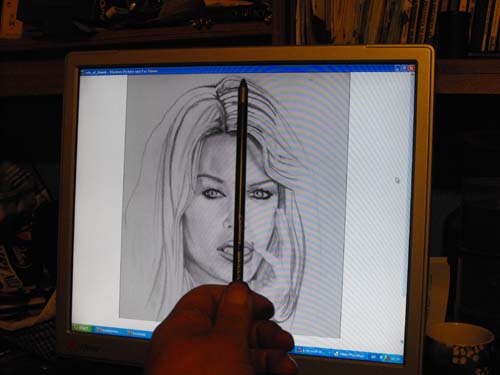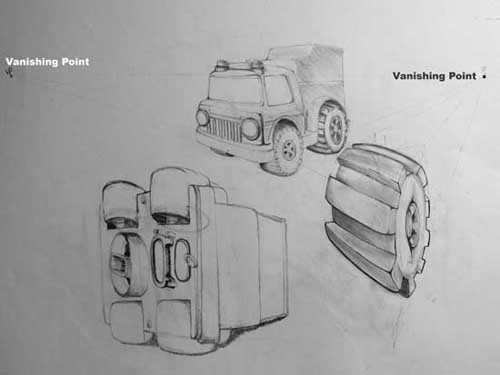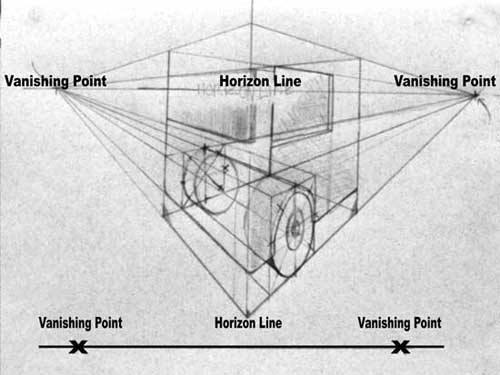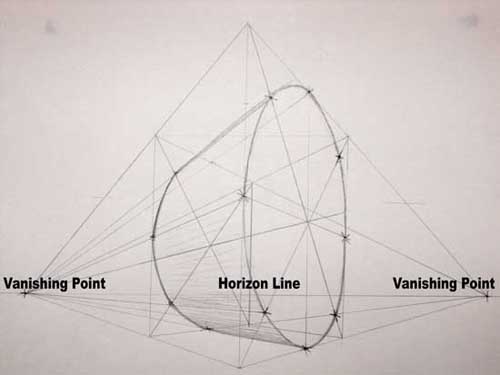The manikin is a great tool for drawing people or figures, it is a wooden doll, that can be set up to give you the basic out line, for a figure posing in any position and a great place to start any figure drawing, especially if you don’t have a real figure to draw from.

There are variations on how many heads tall an average man is, Leonardo de Vinci’s (Vitruvian Man) is almost eight heads tall where as I have seen statements saying that it is seven and half heads. The truth is this, if you measure the head of the person you are drawing, then measure how many heads it takes, to make up the distance or height of the body, it will be closest because most people vary in size anyway.
Doing this is how drawings are constructed, it is how they are measured for accuracy, mapping and recording from the information you gather, then regurgitating it into the next mark you make, to impress an idea in the viewers mind, even if the only viewer is you.
Drawing people as in the faces of people or portraits, are a very different story completely or at least they could be because I don’t use heads for measuring, when doing faces, I sort of use eyes.
The first thing you need to decide, is where you want the head to go on the drawing surface, so where does the top of the head go and where should the bottom go, in relation to the top?
You need to look at the face your doing from side to side, up and down, horizontally and vertically, whilst leaving some kind of marks behind on the drawing surface, to remind you next time around of where these elements go, in relation to each other. I look for markers, as to where the most prominent features go, on the horizontal and vertical plains, now I look where the eyes go and they are usually, half way down the head.
How far from the outer edge of the face, do the eyes start, horizontally and vertically where do the eyes start, on both sides of the face. The distance between an average persons eyes, is usually the same as the distance, from one corner of the eye to the other.
Now you can use this, to re check the other marks, from the outside of the face outline to where the eyes begin, you can use the eyes to also measure, the distance to the end of the nose, from the center point right between the eyes. This distance is usually one and a half times the distance of one eye, from corner to corner.
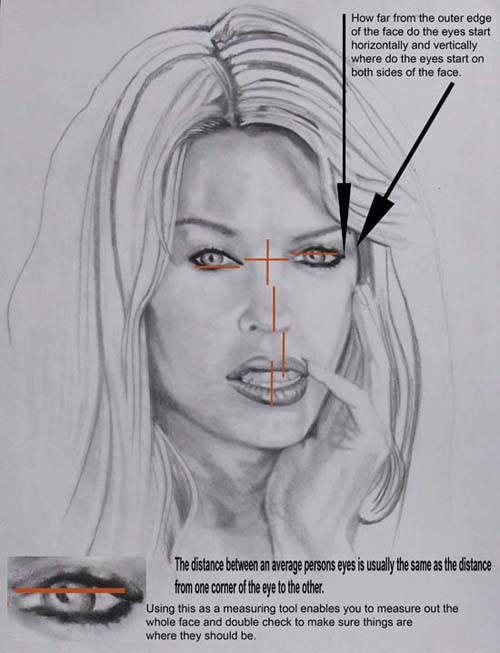
The distance of one eye, usually takes you to the bottom of the bottom lip with the mouth closed and the distance of two, and a half eyes, takes you to the chin, from beneath the bottom of the nose, so the eyes can help you see in more ways than one.
By measuring and checking in this way, you learn to look, and see like artists do or people who make drawings of people do, the most important part of drawing people, is the action of doing the drawing, if you don’t practice, you don’t learn enough.
You can use the rule of thumb, when doing drawings from life by holding your arm out, at full stretch and measuring how many thumbs, equate to the size of the head, and check for accuracy in the same way as above, up and down side to side.
There are many other ways to construct drawings of figures, people or portraits, there is the grid method, where you use a grid over the top of your drawing, that corresponds with a viewing grid that you look through.
If you are copying from a picture, you can use the outer edge of the picture, to use as a measure for reference points, these can then be used for transferring it onto the drawing surface, you can do this by drawing, the outline edge of the picture, onto your drawing area and draw construction lines, see the image below, for a better idea of what I mean.
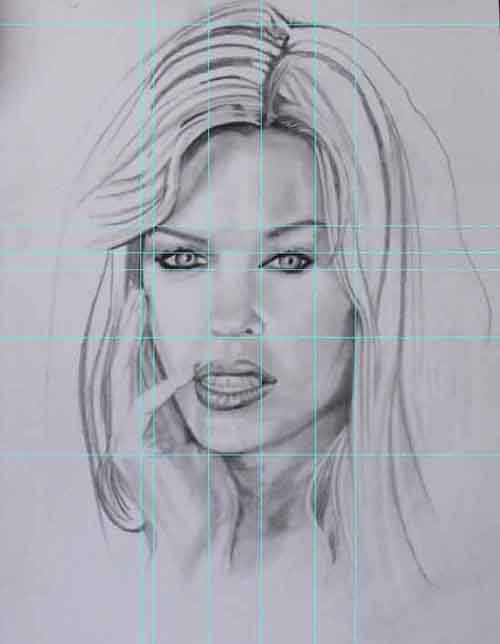
All this is a great way to learn about construction and sets the foundation for creating, great works of art, like the old masters did, and artists still do, because they use these, very same ways as building blocks, to then take the process further.
Michelangelo, Leonardo da Vinci and everybody else uses, there past work as a reference for creating further work, based on this body of work, that they create as they are also learning.
These guys where the ones getting paid for their work because they where revered, as having exceptional skills, that ordinary people didn’t have. When kings wanted something that was impressive, mythical, mystical or magic, to impress the popular culture of the time and still do to the present day, they used artists. The works of Michelangelo, Leonardo da Vinci are impressive because they have been used to teach this knowledge for drawing people, to others for hundreds of years.

